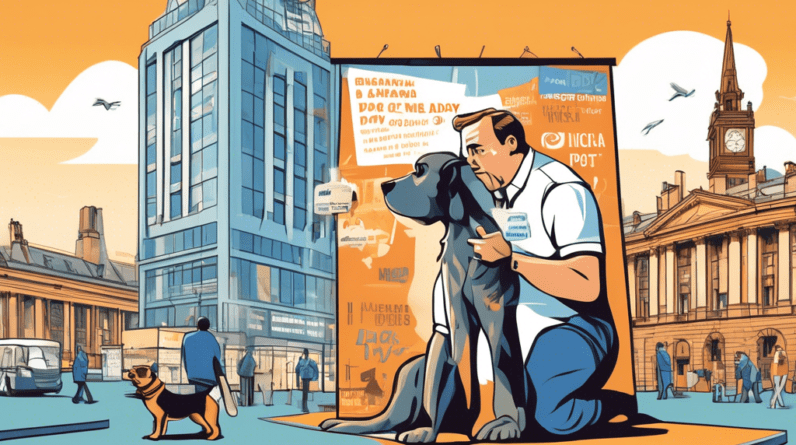
Dogs have long been recognized as loyal companions and invaluable partners to humans. Beyond being faithful pets, dogs play a crucial role in various fields, including law enforcement and military operations. Their keen senses, unwavering loyalty, and natural instincts make them exceptional assets in these demanding environments. In this article, we will explore the fascinating role of dogs in law enforcement and military operations, highlighting their history, training process, responsibilities, and the significant contributions they make to these critical sectors.
Introduction
Dogs have been working alongside humans for centuries, assisting in various capacities. In law enforcement and military operations, they are trained to fulfill specialized roles that support and enhance the capabilities of their human counterparts. These highly trained canines exhibit exceptional skills in areas such as tracking, detection, search and rescue, and apprehension. Through their dedicated service, dogs have become indispensable members of law enforcement agencies and military units worldwide.
Dogs in Law Enforcement
History of Dogs in Law Enforcement
The use of dogs in law enforcement can be traced back to ancient civilizations, where they were employed for tasks such as guarding, tracking, and protecting property. In modern times, the concept of using dogs as partners in crime-fighting gained prominence in the late 19th century. Belgium’s police force was among the pioneers, utilizing dogs for patrol and tracking activities. Over time, the effectiveness of dogs in law enforcement became evident, leading to their widespread adoption.
Types of Dogs Used
Law enforcement agencies utilize various breeds for different tasks based on their innate abilities and temperaments. German Shepherds, Belgian Malinois, Labrador Retrievers, and Dutch Shepherds are among the most commonly employed breeds. These dogs possess traits such as intelligence, agility, endurance, and a strong sense of smell, making them well-suited for tasks such as tracking suspects, searching for narcotics or explosives, and apprehending individuals.
Training Process
The training process for law enforcement dogs is rigorous and comprehensive. It begins with basic obedience training, followed by specialized training in areas such as scent detection, suspect apprehension, and patrol work. Dogs undergo intense physical and mental conditioning to prepare them for real-life scenarios. Experienced trainers utilize positive reinforcement techniques and bond closely with the dogs to ensure effective communication and teamwork.
Roles and Responsibilities
Law enforcement dogs fulfill a range of critical responsibilities. They aid in tracking and apprehending suspects, locating missing persons, detecting illegal substances, and providing support during search and rescue operations. These highly trained canines become an extension of their handlers, assisting in maintaining public safety, preventing crime, and supporting investigations. Their presence alone often acts as a deterrent, contributing to the overall effectiveness of law enforcement efforts.
Dogs in Military Operations
History of Dogs in the Military
Dogs have been utilized in military operations throughout history, dating back to ancient civilizations. They were employed as sentries, messengers, and scouts. In more recent times, their roles expanded to include mine detection, search and rescue, and providing psychological support to soldiers. Notably, during World War I and World War II, dogs played a crucial role in delivering messages and providing aid on the battlefield.
Types of Military Working Dogs
Military working dogs (MWDs) are carefully selected and bred for specific attributes that suit their designated roles. German Shepherds, Belgian Malinois, Labrador Retrievers, and Doberman Pinschers are commonly used breeds. MWDs can be trained for specialized tasks such as explosive or narcotic detection, patrol and security, and even specialized roles like parachute dogs, who can be deployed from aircraft alongside troops.
Specialized Training
The training of military working dogs is intense and extensive, focusing on developing their physical abilities, obedience, and specialized skills. MWDs undergo rigorous training in detection work, tracking, obedience, and controlled aggression. They are exposed to simulated combat situations to acclimate them to the challenging environments they may encounter during deployment. The training also includes exercises to enhance their endurance, resilience, and adaptability.
Roles and Contributions
Military working dogs provide invaluable support to military units on various fronts. They excel in tasks such as explosive detection, locating hidden weapons caches, tracking down enemy combatants, and conducting patrols. These highly skilled canines can detect explosives or narcotics with greater accuracy and speed than most technological equipment. They offer a unique advantage by leveraging their exceptional senses to protect soldiers and civilians alike, often operating in challenging terrains and hostile environments.
Similarities and Differences between Law Enforcement and Military Dogs
While law enforcement and military dogs share many similarities, there are also notable differences in their training approaches, equipment, tasks, and objectives.
Training Approaches
Law enforcement dogs are typically trained to operate in urban environments and interact with civilians. Their training focuses on scent detection, suspect apprehension, and community engagement. Military working dogs, on the other hand, are trained to operate in combat zones and follow specific military protocols. Their training includes exposure to gunfire, parachuting, and helicopter operations, among other specialized skills.
Equipment and Gear
Law enforcement dogs are equipped with harnesses, leashes, muzzles, and other gear designed for their specific tasks. Military working dogs, depending on their roles, may be outfitted with additional protective gear, such as bulletproof vests or goggles. They may also use specialized equipment, such as rappelling or climbing gear, to support military operations.
Tasks and Objectives
Law enforcement dogs primarily focus on maintaining public safety, detecting contraband, and apprehending suspects. They often work in partnership with human officers, serving as a force multiplier. Military working dogs contribute to force protection, counterterrorism efforts, and the overall effectiveness of military operations. They assist in detecting and neutralizing threats, conducting searches, and providing psychological support to soldiers.
Importance of the Human-Animal Bond
Both law enforcement and military dogs form a strong bond with their handlers, relying on clear communication, trust, and mutual understanding. This bond enhances their teamwork and overall effectiveness. The human-animal bond plays a crucial role in the well-being and performance of these dogs, as their handlers become their primary caregivers and partners in challenging and high-stress situations.
Success Stories
The impact of dogs in law enforcement and military operations can be seen through numerous success stories and heroic acts.
Notable Cases in Law Enforcement
In law enforcement, there have been countless instances where dogs played a pivotal role in solving crimes and protecting communities. For example, K9 units have successfully tracked and apprehended dangerous criminals, located missing persons, and discovered hidden contraband. Their keen sense of smell and tracking abilities have proven invaluable in solving complex cases and ensuring justice is served.
Military Operations and Canine Heroes
Military working dogs have also made significant contributions on the battlefield. They have been instrumental in detecting explosives, saving lives by locating buried survivors during natural disasters, and providing crucial support to soldiers in combat zones. These canine heroes have served with unwavering loyalty and bravery, often risking their own lives to protect their human counterparts.
Challenges and Limitations
While dogs in law enforcement and military operations offer exceptional capabilities, there are challenges and limitations to consider.
Health and Well-being Concerns
Working dogs are exposed to physically demanding tasks and high-stress environments, which can lead to physical and mental strain. Ensuring their health and well-being requires adequate rest, medical care, and regular assessments. Heat exhaustion, injuries, and emotional stress are some of the risks that need to be managed to maintain the longevity and effectiveness of these dogs’ careers.
Resource Constraints
Maintaining a strong working dog program requires significant resources, including specialized training facilities, expert trainers, and ongoing investments in equipment and healthcare. Funding limitations may impact the availability of these programs and the number of dogs that can be trained and deployed effectively.
Operational Limitations
Dogs, despite their remarkable abilities, have limitations in certain operational scenarios. For example, they may struggle with working in extreme weather conditions or difficult terrains. Their use in densely populated urban areas can also present challenges due to potential distractions and interactions with civilians.
The Future of Canine Assistance
Advancements in training methodologies and technology continue to shape the future of canine assistance in law enforcement and military operations.
Advancements in Training and Technology
Training techniques are becoming more sophisticated, leveraging scientific research and data-driven approaches to optimize the learning process for these dogs. Technology, such as wearable devices and remote sensing, is also being integrated into training and operational methodologies, enhancing the dogs’ capabilities and improving their safety and well-being.
Emerging Roles and Applications
The use of dogs is expanding beyond traditional tasks. They are being trained to detect emerging threats, such as electronic devices or chemical agents. Dogs are also increasingly employed in non-traditional settings, such as airports, seaports, and border checkpoints, to enhance security measures. These developments signify the versatility and adaptability of dogs in addressing evolving challenges.
Conclusion
Dogs play a vital role in law enforcement and military operations, serving as highly skilled and loyal partners to their human counterparts. Through their specialized training, innate abilities, and unwavering dedication, these canine heroes contribute significantly to the safety and security of communities and the success of military missions. While they face challenges and limitations, ongoing advancements in training methodologies and technology promise an even brighter future for the valuable partnership between humans and dogs in these critical fields.
FAQs
- What breeds of dogs are commonly used in law enforcement and military operations?
- German Shepherds, Belgian Malinois, Labrador Retrievers, and Dutch Shepherds are among the most commonly employed breeds in law enforcement and military operations.
- How long does the training process for these dogs typically take?
- The training process for law enforcement and military working dogs can vary, but it generally takes several months to a year to complete their specialized training.
- Are there any specific health requirements for dogs in these roles?
- Yes, dogs in law enforcement and military operations undergo thorough medical evaluations to ensure they are in good health and physically fit for their demanding roles.
- Can dogs be deployed in combat situations?
- Yes, military working dogs can be deployed in combat situations alongside soldiers. They undergo specialized training to adapt to the challenges and stresses of the battlefield.
- What happens to retired law enforcement and military dogs?
- Retired law enforcement and military dogs are often adopted by their handlers or placed in loving homes where they can enjoy a well-deserved retirement after years of service.






